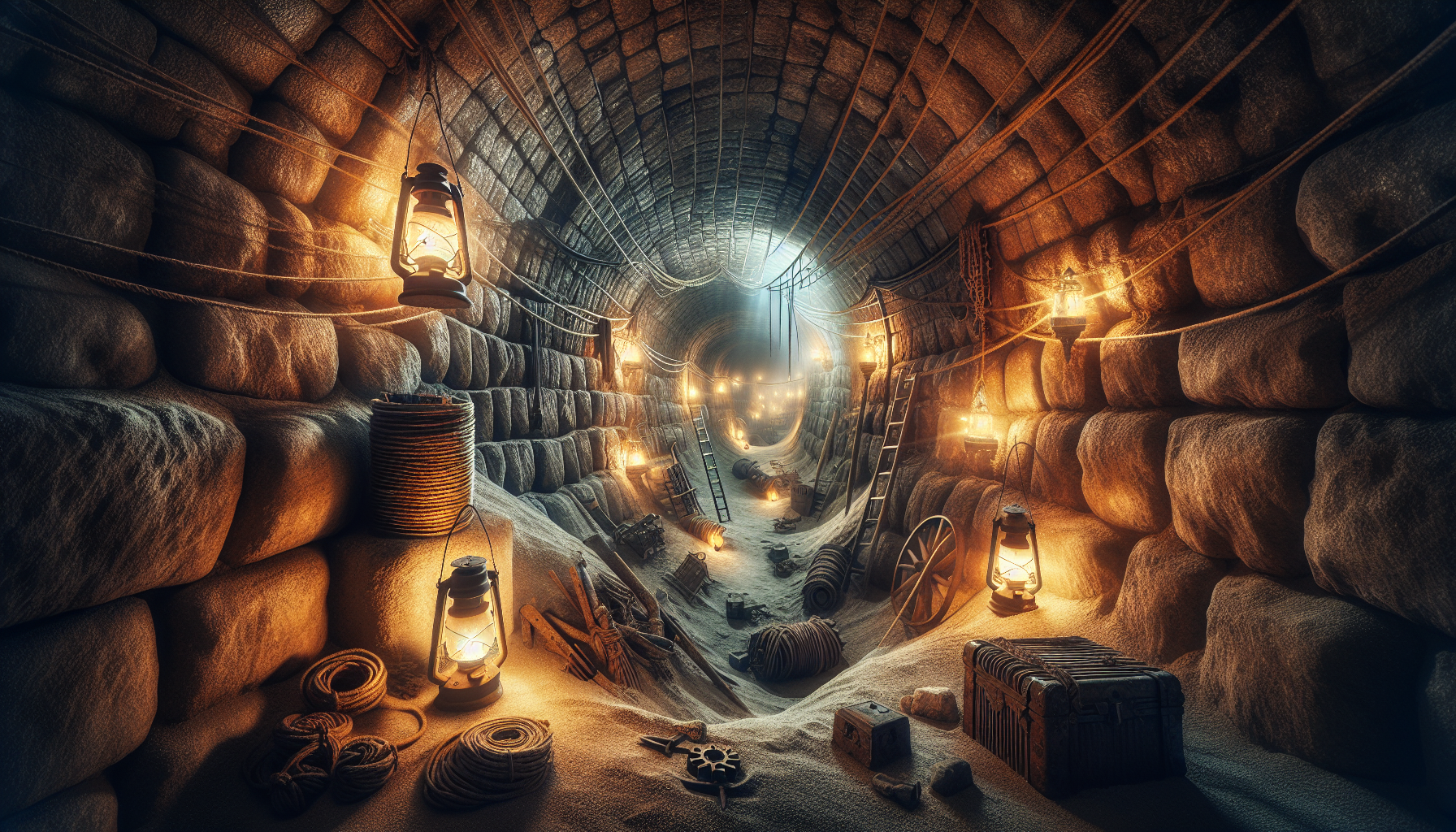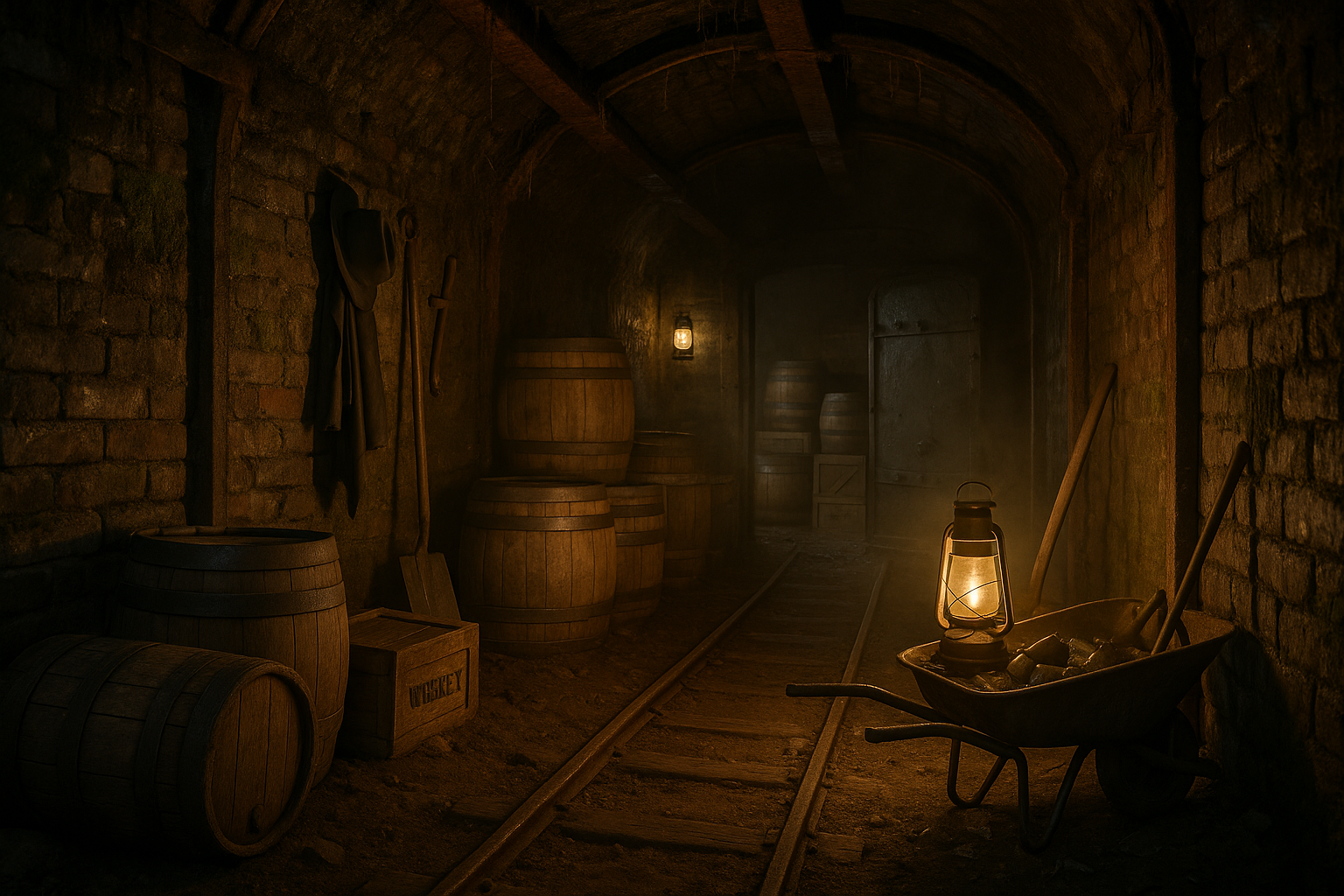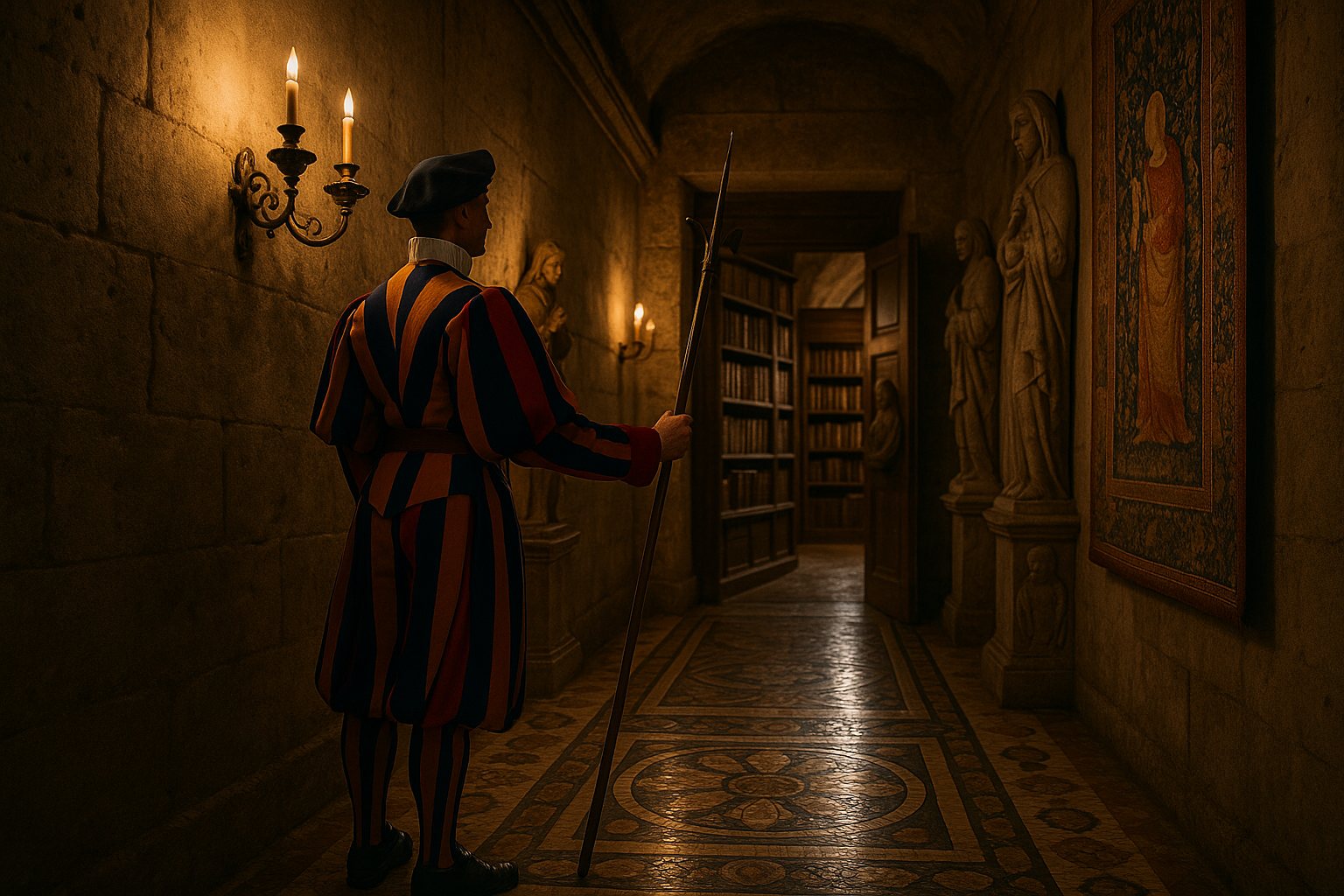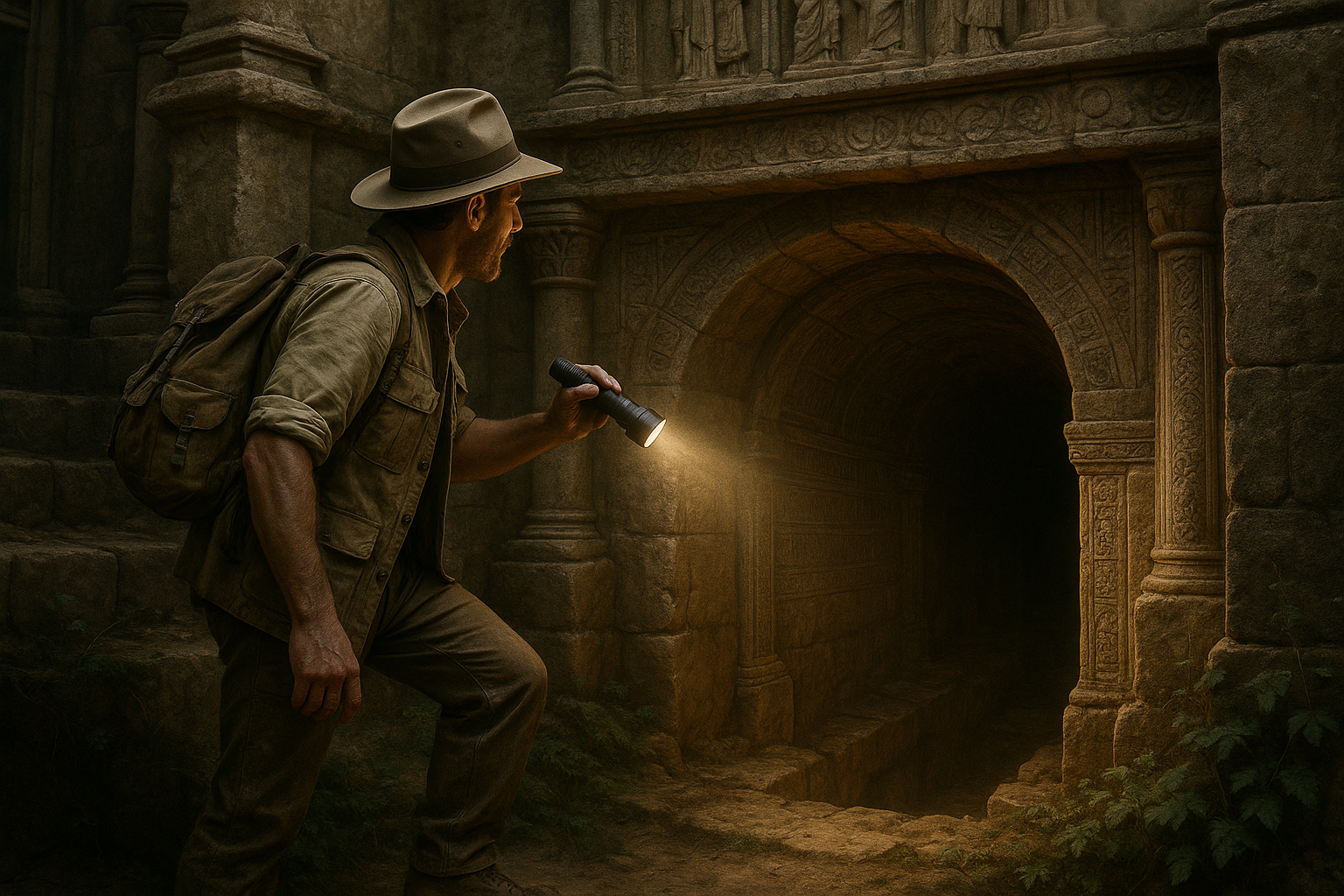In the dimly lit corners of history, where shadows hold secrets and whispers of the past linger, lies a world as intriguing as any fictional tale—a world where audacious criminals defied the boundaries of their imprisonment through sheer ingenuity and daring. These were not just escape artists; they were masterminds of subterranean engineering, carving out clandestine pathways beneath the earth to reclaim their freedom. Welcome to “The Great Escape: Uncovering the Hidden History of Historic Criminals’ Underground Tunnels,” where we delve deep into the labyrinthine world of tunnels, tracing the footsteps of those who dared to challenge fate and confinement. 🌍
This article invites you on a journey through time, unearthing stories that intertwine desperation, innovation, and the timeless human spirit’s desire for liberty. From the legendary escapades of notorious figures like El Chapo, whose escape through a mile-long tunnel stunned the world, to the gritty, less-known tales of World War II prisoners who dug their way out of captivity, we will explore the ingenuity that turned simple digging tools into instruments of freedom. Alongside these tales, we will uncover the architectural marvels of these subterranean passages, examining how their construction often mirrored the social and technological limitations of their times while also highlighting the extraordinary resourcefulness of their creators.
As we navigate this hidden history, we’ll explore the motivations that drove these individuals to such extremes, the meticulous planning required to execute these plans, and the aftermath of their audacious escapes. We’ll also delve into the societal impact and the legacy these underground endeavors left behind. How did these escapes challenge the institutions meant to contain them? What does this reveal about the human condition and our relentless pursuit of freedom, even when faced with seemingly insurmountable odds? Prepare to be captivated as we uncover tales of grit, creativity, and the indomitable will to break free from the chains that bind. 🕳️✨
The Intricate World of Underground Tunnels: A Historical Overview
The realm of underground tunnels conjures images of mystery, daring escapes, and complex engineering feats. Historically, these tunnels have played pivotal roles in numerous high-profile criminal escapes and other clandestine activities. They serve as a testament to human ingenuity and the desperate measures taken by those seeking freedom. Underground tunnels have been used for various purposes, from secretive military operations to infamous prison escapes. These subterranean pathways have often been the difference between captivity and liberty for those who constructed them.
Throughout history, several criminals and groups have employed underground tunnels to outmaneuver their captors. The notorious escape from Alcatraz in 1962 is a prime example. Frank Morris and the Anglin brothers famously used makeshift tools to burrow through the prison walls, eventually reaching the waters surrounding the island. Though their fate remains unknown, their escape remains one of the most audacious in history. This is just one of many instances where tunnels were the key to a daring escape.
Understanding the historical context of these tunnels gives us insight into the lengths individuals have gone to in pursuit of freedom. The tunnels’ construction often involved extensive planning and a deep understanding of the terrain. These factors were crucial in ensuring the tunnels’ success and secrecy. Additionally, the materials and techniques used varied depending on the era and the individuals involved. This diversity highlights the adaptability and resourcefulness of those who dared to dig their way to freedom.
Engineering Marvels and Challenges
Constructing a tunnel is no small feat, especially when done clandestinely. The process requires careful planning and execution to avoid detection and ensure the structure’s stability. Engineers, or those forced to assume the role, must consider several factors when designing these tunnels. They need to account for the soil composition, potential obstacles, and the tunnel’s length and depth. These considerations are vital to ensure the tunnel’s integrity and the safety of those who will use it.
The tools and materials used in tunnel construction have evolved over time. In the past, rudimentary tools were often the only option available to those attempting a breakout. However, despite the lack of advanced technology, these individuals often succeeded in their endeavors, showcasing their determination and ingenuity. Today, more sophisticated methods and tools are available, but the basic principles of tunnel construction remain the same. The process still requires meticulous planning and execution to achieve success.
One of the most significant challenges in constructing a tunnel is ensuring its secrecy. The risk of detection is always present, whether from guards, surveillance systems, or other individuals. Those constructing the tunnels must take great care to minimize noise and other signs of their activities. This often involves working at night or during times when surveillance is less intense. Additionally, tunnel diggers must find ways to dispose of the excavated material without arousing suspicion. This aspect of tunnel construction requires as much creativity and resourcefulness as the actual digging process.
Notable Underground Tunnels in Criminal History
The annals of criminal history are replete with stories of daring escapes facilitated by underground tunnels. These tales capture the imagination, offering a glimpse into the lives of individuals who risked everything for a chance at freedom. Each tunnel has its own story, often reflecting the unique circumstances and challenges faced by those who constructed it. Here, we explore some of the most notable tunnels in criminal history, examining the techniques and strategies employed by their creators.
One of the most infamous tunnels was used by Joaquín “El Chapo” Guzmán during his escape from a Mexican maximum-security prison in 2015. The tunnel, which stretched over a mile, was equipped with ventilation, lighting, and even a motorcycle mounted on rails. This escape demonstrated not only the resources at Guzmán’s disposal but also the sophistication of the tunnel’s design. The planning and execution of this escape were meticulous, reflecting the high stakes involved and the determination of those orchestrating it.
Another remarkable example is the escape from the Stalag Luft III prison camp during World War II. Known as “The Great Escape,” this event involved Allied prisoners of war constructing three tunnels, codenamed “Tom,” “Dick,” and “Harry.” These tunnels were part of a coordinated effort to liberate a large number of prisoners. The escape plan was meticulously organized, with prisoners assigned specific roles, such as forgers, tailors, and diggers. Although only a few managed to escape successfully, the operation remains a testament to the ingenuity and perseverance of those involved.
Comparative Analysis of Historic Tunnels
To understand the complexity and ingenuity of these tunnels, it’s helpful to compare some of their key features. Below is a table that highlights the differences and similarities between three historic tunnels used in criminal escapes:
| Tunnel | Location | Length | Tools Used | Outcome |
|---|---|---|---|---|
| Alcatraz | San Francisco, USA | ~30 meters | Makeshift tools | Escapers never found |
| El Chapo | Altiplano, Mexico | 1 mile | Advanced engineering | Successful escape |
| The Great Escape | Stalag Luft III, Germany | ~100 meters each | Hand tools | Few escaped successfully |
Lessons from the Underground: The Modern Implications
The stories of these tunnels offer more than just thrilling narratives; they provide valuable lessons on planning, resourcefulness, and the human spirit’s resilience. In today’s world, these lessons have implications that extend beyond prison walls. The ingenuity displayed in the construction of these tunnels can inspire modern engineering projects, emphasizing the importance of creativity and adaptability in problem-solving.
Moreover, the stories of these tunnels remind us of the lengths to which individuals will go to achieve freedom. This universal desire transcends time and culture, resonating with anyone who has ever yearned for liberation from oppressive circumstances. The tunnels symbolize hope and the relentless pursuit of freedom, qualities that continue to inspire people worldwide.
These historic tunnels also serve as a reminder of the importance of security and vigilance in today’s world. The sophisticated methods employed in some of these escapes underscore the need for robust security measures in prisons and other sensitive locations. As technology advances, so too do the methods used by those seeking to circumvent security systems. Understanding the techniques used in past escapes can inform the development of more effective security strategies in the future.
Watch the Story Unfold
For a deeper dive into one of these historic escapes, watch this engaging video: The Great Escape from Stalag Luft III – Timeline Channel. This documentary provides a detailed account of the escape, featuring interviews with historians and surviving participants. By watching, you’ll gain a richer understanding of the planning and execution of this remarkable event. Don’t miss the opportunity to see history come alive through this captivating narrative! 🎥

Conclusion
Certainly! Below is a conclusion crafted for your article titled “The Great Escape: Uncovering the Hidden History of Historic Criminals’ Underground Tunnels.” This conclusion is designed to encapsulate the article’s main points, emphasize the significance of the topic, and encourage engagement from readers:
—
In conclusion, “The Great Escape: Uncovering the Hidden History of Historic Criminals’ Underground Tunnels” has taken us on a fascinating journey beneath the surface of what we know about criminal ingenuity and architectural prowess. We delved into the intricacies of how these tunnels were masterminded and constructed, often under the noses of authorities, highlighting the resourcefulness and desperation that drove these individuals to such lengths. From the ingenious designs that avoided detection to the sheer audacity of their creators, these subterranean passages are more than just historical curiosities; they are testaments to human determination and creativity in the face of seemingly insurmountable obstacles.
The article explored several notable examples of these underground escape routes, providing a window into the lives and minds of historic criminals who defied the odds. We examined the techniques they employed, from basic tools to advanced engineering concepts, showing how necessity became the mother of invention. These stories not only illuminate the past but also challenge us to think about the ongoing battle of wits between those who uphold the law and those who seek to circumvent it.
Furthermore, we discussed the broader implications of these tunnels on our understanding of criminal history and law enforcement. They compel us to reconsider the narrative of crime and punishment, suggesting that the physical and psychological barriers created by society are not always as insurmountable as they appear. These revelations urge us to reflect on the ways in which systems of power and control can be subverted, sometimes with remarkable success.
The significance of this topic extends beyond mere historical interest. It serves as a reminder of the complexities of human nature and the lengths to which individuals will go to achieve freedom, however they define it. In a modern context, it prompts questions about our current security measures and the ongoing evolution of criminal tactics. Are we prepared for the next wave of underground innovation? What can these historical examples teach us about anticipating and responding to future challenges?
As we conclude this exploration, it is important to recognize the enduring allure of these hidden histories. They captivate our imaginations and invite us to ponder the depths of human ingenuity. We are reminded that history is not just a collection of dates and events but a tapestry of stories that reveal the resilience and adaptability of the human spirit.
We invite you, dear reader, to further engage with this intriguing topic. Reflect on the ways in which history can inform our present and future. Consider how these stories of escape and evasion might inspire or caution us in our personal and professional lives. We encourage you to share your thoughts in the comments section below—let’s start a conversation about what these underground tunnels mean in the broader context of human history. 🕵️♂️
Moreover, we hope this article inspires you to dig deeper (pun intended) into the hidden aspects of history that often lie just beneath the surface. Share this article with friends and colleagues who might also find this topic fascinating. Let’s spread the curiosity and keep the spirit of exploration alive.
For those interested in learning more, here are some active resources and articles that delve further into the art and science of escape:
1. Smithsonian Magazine – The Most Daring Prison Escapes in History
2. History.com – Infamous Prison Breaks
3. BBC – How Tunnelling Helped Prisoners Escape in WWII
Thank you for joining us on this captivating journey through time and underground spaces. Let the stories of these historic tunnels inspire us to think creatively, act boldly, and always look beneath the surface for new insights and opportunities. Until next time, keep exploring and questioning the world around you. 🌍
—
This conclusion aims to leave the reader inspired and engaged, offering them pathways to further exploration and encouraging active participation.
Toni Santos is a visual storyteller and artisan whose work explores the quiet power of what lies beneath. With a deep fascination for subterranean and hidden architecture, Toni uncovers the layers, voids, and forgotten spaces that shape our built environment from the shadows.
His art is a journey through the unseen — from ancient underground chambers to sealed passageways, service tunnels, and foundations buried in time. Each creation tells a story of silence, secrecy, and structure — revealing how absence and concealment can be just as meaningful as what’s visible above ground.
Whether working through visual compositions, architectural studies, or symbolic handcrafted pieces, Toni captures the soul of hidden spaces. His work bridges art and archaeology, blending design with discovery. Trained in visual design and traditional techniques, Toni creates with intention. His pieces don’t just depict — they interpret, inviting viewers to rethink what space, memory, and architecture mean when they’re hidden from view.
As the creative force behind Vizevex, Toni shares this perspective through curated visual narratives, symbolic collections, and interpretive essays that give voice to the quiet geometries beneath our feet.
His work is a tribute to:
The mystery of spaces built to be forgotten
The symbolism embedded in foundations, voids, and passageways
The timeless connection between human intention and hidden structure
Whether you’re an artist, an urban explorer, or someone fascinated by the unseen frameworks that support our world, Toni invites you into a realm where architecture becomes myth — one corridor, one layer, one buried story at a time.





